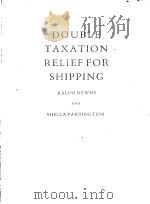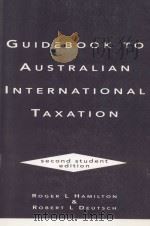《International Double Taxation》
| 作者 | Mogens Rasmussen 编者 |
|---|---|
| 出版 | Kluwer Law International |
| 参考页数 | 220 |
| 出版时间 | 没有确切时间的资料 目录预览 |
| ISBN号 | 9789041134103;9041134107 — 求助条款 |
| PDF编号 | 812910678(仅供预览,未存储实际文件) |
| 求助格式 | 扫描PDF(若分多册发行,每次仅能受理1册) |
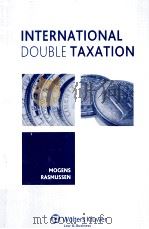
Chapter 1Introduction1
1.01 Defiinition of a Double Taxation Convention1
1.02 Juridical Double Taxation1
1.03 Why Does Double Taxation Occur?1
1.04 Economic Double Taxation2
1.05 The Legal Status of the Danish Conventions3
1.06 The Model Convention3
1.07Survey of the Systematization of the Model Convention4
[A] Brief Overview of the Model Convention4
[B] The Technique Behind Elimination of Double Taxation4
[C] Elimination of Double Taxation4
1.08 Summary of the Articles in the Model Convention5
1.09 Example of the Application of a Convention in Practice9
1.10 The Commentary to the Model Convention10
1.11Why Conclude a Convention?10
[A] Certainty of the Tax Treatment in a State11
[B] Reduction of Withholding Taxes11
[C] Exchange of Information11
[D] Mutual agreement Procedure11
Chapter 2The OECD Model Convention13
2.01Article 1: Persons Covered13
[A]A PE Is Subject Only to Limited Tax Liability, that Is a PE Is Not Regarded as a Person Who Is a Resident13
[1] The Bilateral Situation13
[2] Three States Are Involved13
[B]Partnerships16
[1]Different Characterization of the Tax Subject16
[a] Treatment of the Partnership in the State of Residence of the Partner16
[b] Treatment of the Partnership in the Source State18
[2] Different Characterization of Items of Income(Or Capital)25
2.02Article 2: Taxes Covered26
[A] Enumeration of Taxes26
[B] Social Security Taxes27
2.03Article 3: General Definitions27
[A] Defiinition of the Two States27
[B] Definition of the Terms ‘Person’ and ‘Company’28
[C] Terms Which Are Not Defined28
2.04Article 4: Resident28
[A] The Term ‘Resident’28
[B] Individuals29
[C] Is It of Any Signifiicance that a Person Is Fully Liable to Tax in a State (in the Example Below, Denmark) Which, for Purposes of the Convention, Has Been Classifiied as the Source State?30
[D]Legal Persons30
[1] The ‘Place of Effective Management’ Is Crucial30
[2] Dual Residence Dealt with on a Case-by-Case Basis31
[E] Taxation on a Global Or Territorial Basis31
[F] Some States Apply Both Principles31
2.05Article 5: Permanent Establishment32
[A] Defiinition32
[B] Examples32
[C]The Meaning of the Word ‘Fixed’33
[1] Commercial and Geographic Coherence33
[2] The Duration of the Activity34
[D] Leasing of Equipment35
[E] When Does a PE Begin and Cease to Exist?35
[F] Can a PE Have a PE?36
[G]A Building Site Or Construction Or Installation Project37
[1] Activities Covered by ‘a Building Site or Construction or Installation Project’37
[2] Commercial and Economic Coherence37
[3] What Is a Geographic Area?38
[4] Interruptions during the Building Period38
[H] Pipelines, Cables Et Cetera38
[I]Activities Which Do Not Constitute a PE40
[1] Sale Activity from the Place of Business40
[2] The PE Performs Essential Activities41
[3] The Term ‘Delivery’ in Subparagraph a) of Paragraph 442
[J] Dependent Agents42
[K] Independent Agents43
[L] Electronic Commerce43
2.06 Article 6: Income from Immovable Property44
2.07 Article 7: Business Profiits44
[A]Profit May Be Taxed in the State Where the PE Is Situated44
[1] The ‘Force of Attraction’ Principle Is Not Applied in the OECD Model45
[B]Basically a PE Shall Be Treated As an Independent Enterprise45
[1] The Report ‘Attribution of Profits to PEs’45
[2] Especially about PEs under Paragraph 3 of Article 5(Building Site, Etc.)46
[C]Determination of the Profits: Deduction for Expenses46
[1]Payments between the Head Office and the PE46
[a] Internal Transfer of Goods47
[b] Services47
[c] Interest from Internal Claims47
[d] Special Rule for Financial Enterprises48
[e] Intangible Rights48
[2] Interest of Debts Incurred by the Enterprise48
[D] Indirect Costs49
[E] Foreign Exchange Gains Or Losses50
2.08 Article 8: Shipping and Air Transport50
[A]Profit from Operation in International Traffic50
[B] The Term ‘International Traffiic’50
[C]Activities Connected with Shipping and Air Transport51
[1] Bare Boat Charter and Time Charter51
[2] Other Activities51
[3] Inland Transportation51
[4] Leasing of Containers52
[5] Sale of Tickets52
[6] Income from Advertising53
[D] Investment Income of Shipping Or Air Transport Enterprises53
[E] Relation between Article 8 and Article 553
[F] Freight Taxes53
[G] Widening of the Scope of the Provision54
2.09 Article 9: Associated Enterprises54
2.10 Article 10: Dividends55
[A]Dividends May Be Taxed in the State of Residence55
[B] The Source State Has a Limited Right to Tax Dividends55
[C]The Concept ‘the Beneficial Owner’55
[1] Condition for Reduction of Danish Tax on Dividends56
[D] The Danish Legislation Concerning Dividends56
[E]The Concept ‘Beneficial Owner’ and Conduit Companies56
[1] What Is a Conduit Company?57
[2]How to Prevent This Abuse?58
[a] Widened Interpretation of the Concept ‘Beneficial Owner’58
[b] The Concept ‘Limitation of Benefits’58
[c] A Decision from the Swiss Supreme Court60
[d] Can Abuse be Avoided Effectively?61
[F] The Dividends Are Connected with a Permanent Establishment61
[G] Branch Profits Tax62
2.11Article 11: Interest62
[A] Interest May Be Taxed in the State of Residence62
[B] The Source State Has a Limited Right to Tax Interest62
[C] Special Agreements Concerning Certain Categories of Interest63
[D] The Interest Is Connected with a Permanent Establishment64
[E]Determination of the Source of the Interest64
[1] Two States Involved64
[2] Three States Involved65
[F] Special Relationship between the Payer and the Beneficial Owner66
2.12Article 12: Royalties66
[A] Royalties Are Taxable Only in the State of Residence66
[B] The Definition of Royalties in the OECD Model66
[C] Denmark Can Tax Outgoing Royalties67
[D] The Meaning of the Words ‘the Use of Or the Right to Use’67
[E] The Distinction between Know-How and Services68
[F]Especially about Software68
[1] Transfer of Rights to the Underlying Copyright69
[2] Transfer of Rights in a Copy of the Program69
[3] Transfer of Know-How or Secret Formula69
[G] Royalty Connected with a PE70
[H] Relationship between the Payer and the Beneficial Owner70
[I] Practical Examples70
2.13 Article 13: Capital Gains75
2.14 Article 14: Independent Personal Services76
2.15 Article 15: Income from Employment77
[A]Income from Employment77
[B]Exception if Certain Conditions Are Met77
[1] Presence Not More Than 183 Days78
[2] The Employer May Not Be a Resident of the Work State79
[3]Salary Is Not Borne by a PE79
[a] A Triangular Case79
[C] Hiring Out of Labour80
2.16 Article 16: Director’s Fees82
2.17 Article 17: Artistes and Sportsmen82
2.18 Article 18: (Private) Pensions83
[A]The Pensions Are Taxable Only in the State of Residence83
[B] Social Pensions and Other Social Security Benefiits83
[C] Annuity Assurances84
[D]Danish Treaty Policy84
[1] Example of the Wording of Article 18 in a Danish Convention84
[E] Payments Covered by the Social Security Legislation85
[F] Another Wording of Article 18 in the Danish Conventions85
[G] Limited Right to Deduct Payments to Foreign Pension Funds, Etc.86
[H] Proposal Contained in the OECD Model Convention86
[I] Deduction for Payments to Foreign Pension Schemes88
[J] Partial Renunciation of Taxing Pensions89
2.19 Article 19: Government Service90
[A]Public Authorities90
[B] Salary Is Taxable Only in the Working State91
[C] Public Pensions and Other Similar Remuneration91
[D] Business Carried on by the State91
2.20 Article 20: Students92
2.21Article 21: Other Income92
[A] Examples of Items of Income Covered by the Article92
[B] Income from Third States92
[C] Income Associated with a PE94
2.22 Article 22: Taxation of Capital94
2.23Article 23: Methods for Elimination of Double Taxation94
[A] The Credit Method95
[B]The Exemption Method97
[1] ‘Old’ Exemption97
[2] ‘New’ Exemption98
[C] Exemption Method and Employment Income98
2.24 Article 24: Non-discrimination100
2.25 Article 25: Mutual Agreement Procedure101
2.26 Article 26: Exchange of Information102
2.27 Article 27: Assistance in Collection of Taxes103
Chapter 3The UN Model105
3.01Introduction105
3.02 Article 5: Permanent Establishment105
[A]A Building Site and Furnishing of Services105
[B] Activities Which Do Not Constitute a PE106
[C] Dependent Agents107
[D] Insurance Provision107
[E] Independent Agents108
3.03Article 7: Business Profits108
[A] ‘Force of Attraction’108
[B] Determination of the Profiits: Deduction for Expenses109
3.04 Article 8: Shipping, Inland Waterways Transport and Air Transport109
3.05 Article 9: Associated Enterprises110
3.06 Article 10: Dividends110
3.07 Article 11: Interest110
3.08Article 12: Royalties110
[A] The Source State Is Entitled to Tax Royalties111
[B] The Definition of Royalties Is Widened111
[C] Determination of the Source of the Royalty111
3.09 Article 13: Capital Gains112
3.10 Article 14: Independent Personal Services112
3.11 Article 16: Director’s Fees and Remuneration of Top-Level Managerial Offiicials113
3.12 Article 18: Pensions and Social Security Payments113
3.13 Article 21: Other Income114
Chapter 4Provisions Which Are Not Included in the Model Conventions115
4.01Technical Fees115
4.02 Professors, Teachers and Researchers116
4.03 Activities in Connection with Preliminary Surveys, Exploration or Extraction of Hydrocarbons116
4.04 Tax Sparing (Matching Credit)119
4.05 Most-Favoured Nation Clause120
4.06 Taxation of Services120
Chapter 5Agreements Containing a Single Provision Concerning ‘Exchange of Information’123
Chapter 6New Wording of Article 7 in the 2010-Update of the Model Convention125
Chapter 7Changes in the Commentaries in the 2010-Update of the Model Convention127
7.01Cross-Border Issues Relating to Collective Investment Vehicles127
[A] The Application of the OECD Model Convention to CIVs128
[B] Proposals for Provisions Modifying the Treatment of CIVs129
7.02New Commentaries to Article 7131
[A] The Report131
[B]The New Commentaries136
[1] The Commentary to Paragraph 1137
[2] The Commentary to Paragraph 2138
[3] The Commentary to Paragraph 3142
[4] The Commentary to Paragraph 4144
7.03 New Commentaries to Article 15 Concerning the Hiring Out of Labour145
7.04 Application of Tax Treaties to State-Owned Entities, Including Sovereign Wealth Funds149
7.05 Issues Relating to Common Telecommunication Transactions150
Appendix ⅠThe OECD Model and the UN Model Arranged as Parallel Texts153
Appendix ⅡAgreement on Mutual Administrative Assistance Concerning Exchange of Information201
Appendix ⅢAgreement between the Government of Denmark and the Government of the Cayman Islands Concerning Information on Tax Matters207
Index215
《International Double Taxation》由于是年代较久的资料都绝版了,几乎不可能购买到实物。如果大家为了学习确实需要,可向博主求助其电子版PDF文件(由Mogens Rasmussen Kluwer Law International 出版的版本) 。对合法合规的求助,我会当即受理并将下载地址发送给你。
高度相关资料
-
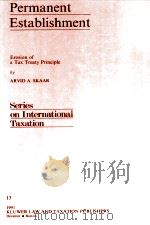
- PERMANENT ESATBLISHMENT SERIES ON INTERNATIONAL TAXATION
- 1991 KLUWER LAW AND TAXATION PUBLISHERS
-

- Double Eagle
- 1988 Sphere Books Limited
-

- Double take
- 1972 Macmillan
-

- ISSUES IN INTERNATIONAL PARTNERSHIP TAXATION
- 1991 KLUWER LAW AND TAXATION PUBLISHERS
-

- DOUBLE-WOLE
- 1991 ALLEN & UNWIN
-

- DOUBLE JEOPARDY
- 1969 OXFORD
-
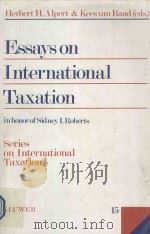
- ESSAYS ON INTERNATIONAL TAXATION
- 1993 KLUWER LAW AND TAXATION PUBLISERS
-
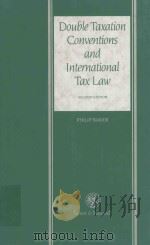
- DOUBLE TAXATION CONVENTIONS AND INTERNATIONAL TAX LAW
- 1994 LONDON Sweet and Maxwell
-

- The Impact of State Sovereignty on Global Trade and International Taxation
- 1999 Kluwer Law International
-

- DOUBLE CANON
- 1960 LTD
-

- INTRODUCTION TO UNITED STATES INTERNATIONAL TAXATION FOURTH REVISED EDITION
- 1998 KLUWER LAW INTERNATIONAL
提示:百度云已更名为百度网盘(百度盘),天翼云盘、微盘下载地址……暂未提供。➥ PDF文字可复制化或转WORD


